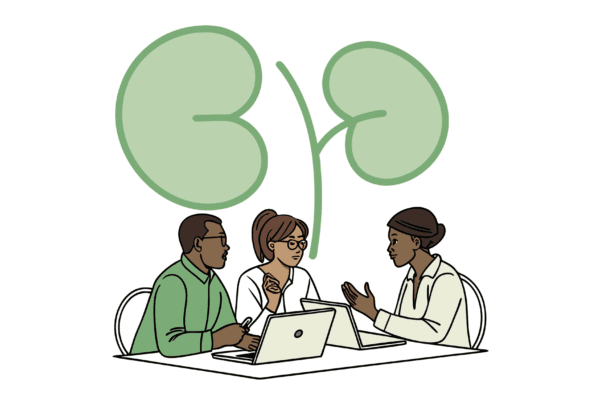Selling your integrated Speech and Occupational Therapy practice is one of the most significant decisions you will make. In the competitive Washington, DC market, a successful sale requires more than just finding a buyer. It demands careful preparation, a deep understanding of market dynamics, and a clear strategy to maximize your practice’s value. This guide provides a direct overview of what you need to know to navigate this process and achieve your financial and personal goals.
Market Overview
The current market for pediatric therapy practices is strong. We are seeing robust M&A activity, with transaction volumes reaching recent highs. For you, as a practice owner in Washington, DC, this activity creates a favorable environment for a sale. But the DC market has its own unique character.
A Seller’s Market
The high demand from various buyer types means that well-run practices are getting a lot of attention. Strategic buyers and private equity groups are actively looking to expand their footprint in desirable urban locations. This competition can drive up valuations, giving you leverage if you are properly prepared.
The DC Advantage
In a city like Washington, DC, your practice’s value goes beyond the numbers. Your established reputation and the trust you have built in the community are significant assets. Buyers are not just acquiring a business; they are acquiring a brand with a loyal client base, which is difficult to build from scratch.
Key Considerations for a Successful Sale
Before you enter the market, it is important to look at your practice through a buyer’s eyes. Sophisticated buyers are interested in stability and growth potential. They look closely at a few key areas that go beyond your annual revenue. The most valuable practices can operate smoothly without being entirely dependent on the owner. This means having transferable systems for billing, scheduling, and client intake. A strong team of therapists who can ensure continuity of care is also a major advantage. A practice that runs itself is a practice that’s ready to sell.
Understanding Current Market Activity
The buyers in today’s market are a diverse group. Understanding who they are and what they want is key to positioning your practice correctly. The pediatric therapy sector is seeing a lot of movement, largely driven by two types of acquirers.
Here are the most active players:
1. Strategic Investors: These are often larger therapy providers or healthcare networks looking to expand their services or geographic reach in the DC area. They are interested in your operational strengths and your existing client and referral networks.
2. Private Equity-Backed Platforms: Many private equity firms that invested in therapy platforms several years ago are now selling them to other investment firms in what are called “secondary buyouts.” This activity creates opportunities for well-established independent practices to be acquired by these larger, growing platforms.
Knowing which type of buyer aligns with your goals for your legacy and your team is a critical part of the sale strategy.
Navigating the Sale Process
Selling your practice is a structured process, not a single event. It begins long before you speak to a potential buyer. The first step is preparation, which involves organizing your financial records, documenting your procedures, and assessing your team’s transition plan. Once prepared, a professional valuation establishes a credible asking price. The next stages involve confidentially marketing the practice to qualified buyers, negotiating terms, and navigating the due diligence phase. This is where buyers verify every detail of your business. Many deals encounter problems here, but with proper preparation, you can ensure a smooth and predictable closing.
How Your Practice Is Valued
A common question we hear is, “What is my practice actually worth?” The answer is more complex than a simple revenue multiple. A professional valuation looks at your practice’s profitability using a metric called Adjusted EBITDA (Earnings Before Interest, Taxes, Depreciation, and Amortization). This figure normalizes your earnings by adding back owner-specific or one-time expenses to show the true cash flow of the business. This Adjusted EBITDA is then multiplied by a number based on market conditions and specific risk factors.
The table below shows how different a practice’s characteristics can impact its final valuation.
| Factor | Impact on Valuation |
|---|---|
| Associate-Driven Model | Higher Multiple |
| Owner-Reliant Operations | Lower Multiple |
| Documented Systems & Processes | Higher Multiple |
| Strong DC Reputation & Brand | Higher Multiple |
Because of these variables, relying on a generic formula is a mistake. A tailored valuation is the only way to understand what buyers will be willing to pay.
Life After the Sale
Closing the deal is not the end of the journey. Planning for what comes next is just as important as preparing for the sale itself. A successful transition ensures that your patients continue to receive excellent care and that your staff feels secure under new ownership. You should think about the staff transition and your own role, if any, after the sale. Some owners stay on for a period to ensure a smooth handover, while others seek a clean break. The structure of the sale also has significant tax implications. Proper planning can protect your proceeds and help you make the most of your hard-earned equity. Thinking about your legacy and these post-sale details early in the process will lead to a better outcome for everyone involved.
Frequently Asked Questions
What makes the Washington, DC market favorable for selling a Speech & Occupational Therapy Integration practice?
The Washington, DC market is favorable for selling such practices because of high demand from strategic buyers and private equity groups looking to expand in desirable urban locations, driving up valuations. Additionally, an established reputation and loyal client base in DC add significant value beyond just the financials.
What are the key factors buyers look for in a Speech & Occupational Therapy practice?
Buyers look for stability and growth potential in a practice. Key factors include having transferable systems for billing, scheduling, client intake, and a strong team of therapists to ensure continuity of care. Practices that operate smoothly without being owner-dependent are more valuable.
Who are the most common types of buyers for Speech & Occupational Therapy practices in Washington, DC?
The most active buyers are strategic investors, such as larger therapy providers or healthcare networks expanding services or geography, and private equity-backed platforms involved in secondary buyouts. Understanding which aligns with your goals is important for your sale strategy.
How is the value of a Speech & Occupational Therapy practice determined?
Value is based on Adjusted EBITDA, which normalizes earnings by adding back owner-specific or one-time expenses to reflect true cash flow. This figure is multiplied by a market and risk factor-based multiple. Practice characteristics like associate-driven models, documented systems, and a strong DC reputation increase valuation.
What should owners consider about life after selling their practice?
Owners should plan for staff transition and decide their role after the sale, whether staying on for a smooth handover or seeking a clean break. They should also consider the tax implications of the sale structure and think about protecting their legacy and ensuring ongoing patient care and staff security.



